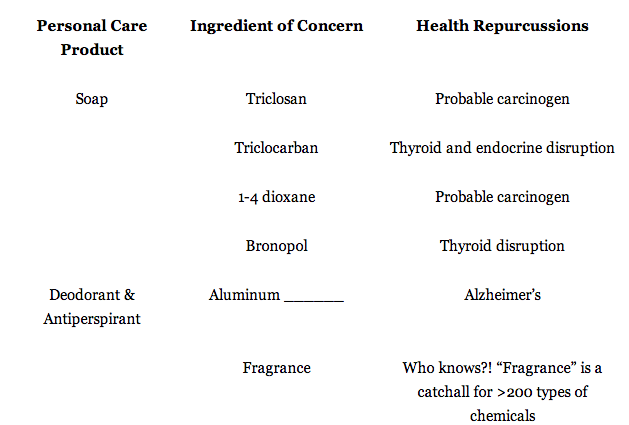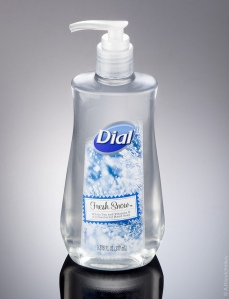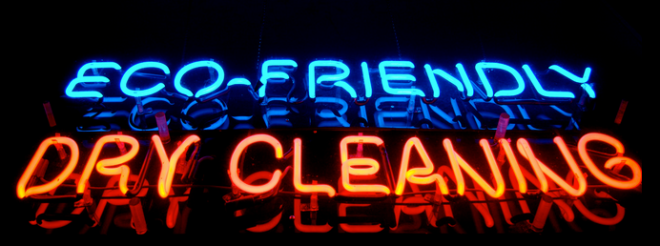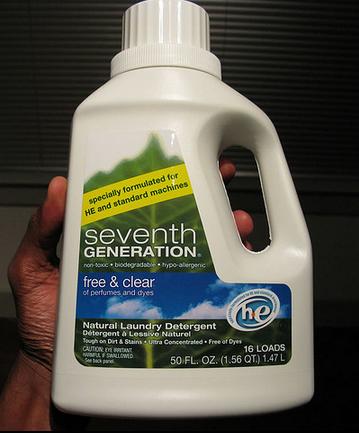We recommend you read through this whole page and click on any link which you’d like to learn more about, all of which will open in a separate tab (in other words, don’t worry about losing this page). For your health, reading this page and the suggested readings may be the most important 30 minutes you ever spend!
Why the concern over chemical ingredients in our food and personal care? Aren’t they tested by the FDA and determined safe?
Chemical ingredients are everywhere. Some people are very concerned about exposure, and others trust that our government is looking out for us and making sure it’s all at safe levels. Here’s some things to consider.
- There are more than 100,000 manmade chemicals out there. Of these, only a tiny fraction have ever been tested for toxicity.
- Even when toxicity studies are done, they’re done on chemicals one at a time, whereas in real life, we’re exposed to hundreds daily.
Recommendation: don’t worry about trying to eliminate chemical exposure. It’s impossible in our modern world. But, cut down on your chemical exposure as much as possible by reducing the number of products you use, and reading labels and avoiding the worst of the worst ingredients in food and body care products.
Recommended reading:
- FDA testing on chemical ingredients: are we safe? (from Feel Good Style)
What chemical ingredients should I look to avoid in personal care products?
There are so many, it can seem overwhelming. Click on the image below for a handy guide to the worst of the worst in each kind of personal care product.

Recommended reading:
- Ingredients to avoid in personal care (from Feel Good Style)
- FDA cracking down on antibacterial agents in soap–finally demands proof of effectiveness, and questions long term health (from CNN)
What about food? What are the main things to remember so I can eat healthier and get less chemical exposure?
We truly are what we eat. Michael Pollen, author of The Omnivore’s Dilemma, gives a great set of food rules: Eat Food. Less of it. Mostly plants.
By “eat food”, he means check the ingredient label. If there’s high fructose corn syrup, xanthan gum, and polyascorbic acid, it’s not food. It’s chemical goop. By “Less of it”, he means that we simply eat too much. All those extra calories and generous portions not only add pounds, they stress our digestion. And by “Mostly plants”, he means that we should really all be eating a plant based diet. The longest human study in history, spanning more than a million people tracked over several decades, clearly shows that most of our modern diseases stem from a meat-based diet. In addition, artificial hormones, agrichemicals, and antibiotics all bioaccumulate in meat. Thus a pound of wheat is likely to have a lot less chemical residue than a pound of meat, meaning more of that gunk gets into you when you eat more meat.
Also think about the crops that are typically grown with the most chemicals, and try to avoid those. Consider this: bottles of wine were tested by the Environmental Working Group, and the findings showed an average of four different types of pesticides present in the wine. One bottle had 10 different ones. Sheesh!
Recommendations: shop at farmer’s markets and health food stores, buy in bulk to save money and get whole grains, cut down/cut out your meat consumption (try a few days a week at first), grow some of your own food, and reduce consumption of stuff with packaging (once something is packaged, it likely has a ton of additives).
Recommended readings:
- Top 10 Most Common GMO Foods (from Eat Drink Better)
- Cambridge Study Links Meat Consumption with All Sorts of Diseases (from Eat Drink Better)
- Produce with the highest pesticide residues: the dirty dozen (from Vibrant Wellness Journal)
What about food labels like “all natural”, Non-GMO, and “organic”?

Food labels are ubiquitous. Some have more meaning than others. Unfortunately, the Federal Trade Commission regulates only a handful of labels, meaning that companies are free to use the others as they see fit, whether it is related to truth at all. Wesson, a ConAgra brand, labels their corn, soy and vegetable oils as “all natural”, for instance, when they are 100% GMO.
Trustworthy labels include Certified non-GMO and USDA organic. Labels that are meaningless include “all natural”, “eco-friendly”, “green”, “healthy”, and many others.
Recommendations: look to the Aggregated Nutrient Density Index (ANDI) scale, as opposed to label-words. ANDI will tell you how many nutrients (both macro and micro) a food has in relation to its calories. So the higher the ANDI, the better the food is for you. The scale goes 1-1000. Red meat is a 13. Eggs are 21. Spinach is in the 600’s and kale is a 1000.
Recommended readings:
- Wesson’s “all natural” oils that are 100% GMO highlight greenwashing (from Ecopreneurist)
- The Federal Trade Commission Cracks down on Green Marketing Claims (from Inspired Economist)
- Introduction to the Aggregated Nutrient Density Index (ANDI) (from Vibrant Wellness Journal)
- What do those little numbers on produce stickers mean? (from Vibrant Wellness Journal)
I’ve heard that plastic can leach chemicals into food. What are the best options for food storage? Is it safe to microwave plastic?
Plastic is made from oil, and as a petrochemical, it does react chemically with its surrounding environment. In practice, what this means is that food and drink stored in plastic can “leach” chemicals into the food or drink. But not all plastics are created equal…they have numbers on the bottom, and those numbers can help you tell what’s a safer and what’s a less safe plastic to use. In addition, what does “microwave safe” actually mean? It’s not what you think it means.
For the best food storage options, Pono Home recommends glass, either in Pyrex containers, mason jars, or similar options. Glass is not a petrochemical product, and as such, does not leach any chemicals into food, whether it’s hot or not.

Photo from Noseotter on Flickr Creative Commons
Recommended readings:
- Plastic-free cooking and food storage (from Eat Drink Better)
Speaking of the microwave, is it safe to stand near a microwave while it’s cooking?
Yes, so long as the seal around the door is not compromised and the microwave is in good working condition, it should be safe to stand near it while cooking. If you are nervous about it, simply keep people away from the microwave while it’s operating, as microwave radiation dissipates with distance. As for what microwave radiation does to food, we’re not sure we’ve seen a conclusive study on this, and therefore offer no opinion on the matter. If you find a study on this, please let us know via email (sidebar has contact info).
What about bacteria in the kitchen?
There are a plethora of products on the market offering to sanitize your kitchen and kill germs. But given that many of them are pretty toxic, what’s a concerned cook to do? First, relax. Germs are everywhere, all the time. As soon as a surface is sterilized, it is immediately colonized by new bacteria from the air.

Photo from A. Klioutchnikov on Flickr Creative Commons
Both the American Medical Association and the American Academy of Microbiology say there is no difference between regular soap and antibiotic soap, so the only effectiveness of antibiotic soap is as a marketing gimmick.
But that gimmick comes with real costs. Antibiotic soaps most commonly contain triclosan, a probable carcinogen. There are a slew of environmental problems that come from triclosan, too.
Recommendations: generally keep things clean but don’t sweat the false idea of sterilization or sanitization. You can clean sponges that have gotten gunky with boiling water, the washing machine, dishwasher, or microwave. Consider switching out a knife block for a magnetic knife storage strip…knife blocks are notorious for harboring bacteria and being impossible to clean. Generally, the most important thing is to not transfer bacteria from your hands to your food to your stomach. So wash hands before preparing food and before eating.
And enjoy your triclosan-free meal.
Is it safe to cook with teflon-coated pans?
There are three main problems with using teflon. One is fumes. One is PFOA. And the other is scratches. For more information, read: How Toxic is Teflon?
Should I be concerned about chlorine in my soaps and detergents?
In short, yes, generally. Small amounts of chlorine won’t hurt you, in general, but when chlorine is volatized, as it is in dishwashing soap when hit with hot water from the dishwasher, it can combine with molecules in the air to form organochlorines, a family of compounds that includes dioxin, a very hazardous known carcinogen.
Recommendations: Seek out dishwasher soap without chlorine. Pono Home recommends Ecover brand dishwasher tablets, which are both effective and chlorine free.
Is dry cleaning safe?
Dry cleaning is the process of using gasses (instead of liquids) to clean your clothes, especially hard to clean items and delicate fabrics. Unfortunately, if you’ve ever been in a dry cleaners, you’ll know that toxic smell can’t possibly be healthy or eco-friendly. It’s not. It’s perchloroethylene (perc), a carcinogen. Odds are, perc is going to be phased out of use, but regulations like that meet a lot of political obstacles, regardless of whether there’s a clear health threat or not.
In the meantime, there are some better alternatives. A slightly less toxic alternative is Green Earth Cleaning. It’s a silicone based cleanser, but was developed by Dow Corning, is still a petrochemical, and is still carcinogenic. Still better than perc. There are new technologies based on carbon dioxide cleaning and what is called “wet cleaning”. These are much more truly non-toxic alternatives, and do the same job, just without the cancer.

Photo from Jeremy Brooks on Flickr Creative Commons
Recommendations: wool, silk and rayon can be washed by hand and gently hung to dry. Also, check out www.NoDryClean.com for a list of alternative dry cleaners. Most are still using the D-5 silicone cleanser (Green Earth), but this list is evolving and will eventually feature much more carbon dioxide and wet cleaning alternatives. And hey, if there’s not one of these services in your neighborhood, consider it a green business opportunity, and maybe start one or help someone locally start one!
How do I improve my indoor air quality?
Indoor air quality is critical, especially if the weather doesn’t permit you to open windows. All the chemicals in our homes have actually spawned a whole new breed of illness: sick building syndrome. It’s a term used to describe a whole suite of symptoms that result from breathing petrochemical air inside all day.
Recommended readings:
I’ve heard candles might not be all that healthy to burn indoors. What’s the deal there?

Photo from rogerglenn on Flickr Creative Commons.
Most candles are cheaply made, from petrochemical ingredients, in China, where there are few health, environmental, and safety regulations. As a result, they’re mostly paraffin based, and many have wicks that contain lead! When burned, these candles produce a toxic brew containing heavy metals like lead, as well as known carcinogens such as toluene and benzene. Seriously not relaxing!!
Recommendations: Get 100% beeswax candles with organic cotton wicks. Anything less than that, and you’re risking some toxic indoor air exposure.
Recommended reading:
- 10 ways to green your Thanksgiving (from Red, Green and Blue)
What about cleaning products? What can I do to reduce toxic exposure in my home?

Photo from joshspoon on Flickr Creative Commons
Cleaning products traditionally have contained a lot of nasties. Parabens, pthalates, chlorine…the list goes on. The good news is that there are several brands on the market you can trust. For just a few pennies per cleaning, you can get really good, eco-friendly cleansers from Seventh Generation and Method. You can also make a lot of your own cleansers for much cheaper than even the most nasty chemical store bought brand. See below for some resources on that.
Recommended reading:
- Homemade natural drain cleaner (from Green Living Ideas) and Two non-toxic drain opening secrets (from GreenBusinessOwner.com)
- Use natural products to clean your home (from Green Living Ideas)
- How to make your own eco-friendly laundry soap for 3 cents (from Crafting a Green World)
- Natural Cleaning Recipes (from Green Living Ideas)
Dust?
Dust is a term used to describe the floating debris in the house. It’s kinda gross, but if you use aerosol sprays with chemicals and generally have a house that is not yet pono, the dust in your house might be more than just a sneeze-inducer. Did you know that most household dust “contains a whole lot of lead, PFOS (from Scotchguard and other non-stick coatings) and PBDEs (flame retardants)”? So it’s good to purge the house of the stuff as often as you can handle it.
Recommendations: Wet wipe all surfaces once a week or 2-3 times per month, depending on the number of people, pets, etc., in your home. No need for a chemical dusting spray…a wet rag works pretty well! If you have an A/C and/or furnace, make sure to clean and change filters regularly.
How do I keep my pet flea free without using chemicals?
There are several ways to deter fleas naturally. Add small amounts of brewer’s yeast and garlic to its food, or rub its fur with diatomaceous earth or essential oils.
Can houseplants improve indoor air quality, and how would I know what to use?
Short answer..YES!
Recommended readings:
- Here’s the best science on the subject from NASA, who studied indoor air for space shuttles. Right.
- 10 houseplants the clean indoor air
How can we eat healthy, whole foods on a budget like ours?
Recommended readings:
- Eating Healthy Food on a Budget (from Vibrant Wellness Journal)
- Healthy Eating and Drinking on a Budget (from Eat Drink Better)
How do I handle a broken CFL, since it has mercury in it?
Recommended readings:
- How to Clean Up and Recycle a Broken CFL Safely (from Green Living Ideas)
